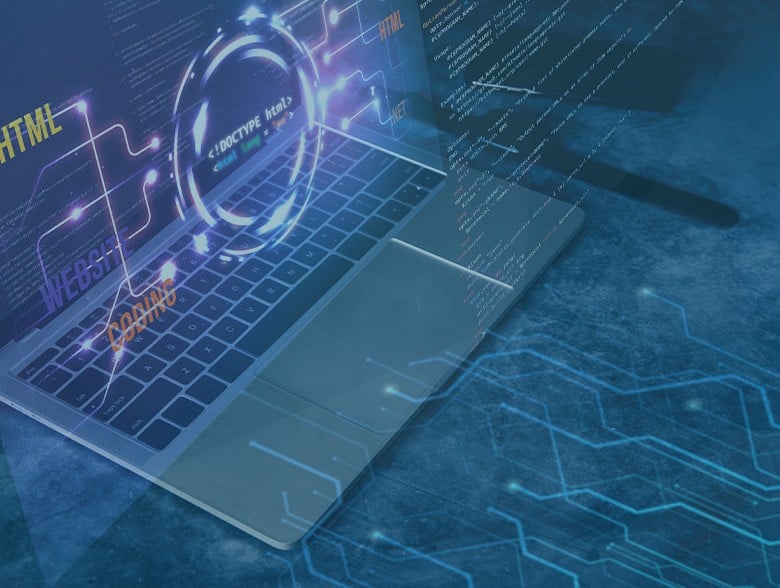In a world where 100% security is not possible, we need to be resilient as we strive to be secure.
By James Gorman, Hard2hack.com
The evolving landscape of cyber threats in our increasingly digital world calls for a strategic shift from traditional cybersecurity to a more encompassing and proactive approach: cyber resilience. This transition is not just a change in technology or tactics but a fundamental shift in mindset and organizational culture. Let’s delve deeper into each of the critical steps to achieve this crucial transition:
- Assess and Understand Risks
Understanding the unique risk profile of your organization is the bedrock of cyber resilience. This involves:
- Comprehensive Risk Assessments: These should cover all aspects of the organization, including IT infrastructure, data, personnel, and third-party interactions. A thorough assessment identifies potential vulnerabilities and threats, both internal and external.
- Regular Reviews and Updates: Cyber threats are dynamic, so regular reviews and updates to the risk assessment are essential. This ensures that the organization’s understanding of its risk profile evolves with the changing threat landscape.
- Develop an Incident Response Plan
An effective incident response plan is a cornerstone of cyber resilience. Key components include:
- Clear Procedures and Protocols: The plan should outline specific steps during a cyber incident. This includes identifying the breach, containing it, and initiating recovery processes.
- Designated Response Team: A dedicated team, well-versed in the response plan, is crucial. This team should have clearly defined roles and responsibilities and be equipped to act swiftly in the event of an incident.
- Communication Strategy: A well-thought-out communication strategy is vital, both for internal coordination and for managing external communications with stakeholders, customers, and potentially the public.
- Foster a Security Culture
Building a culture of security is about more than rules and regulations; it’s about creating an environment where cyber resilience is everyone’s responsibility.
- Employee Training and Awareness: Regular training and awareness programs help employees understand the importance of cybersecurity and their role in maintaining it. This includes recognizing potential threats like phishing attacks and practicing safe online behaviors.
- Empowering Employees: Employees should feel empowered to voice concerns and report suspicious activities. A culture of openness and vigilance can be one of the strongest defenses against cyber threats.
- Regularly Test and Update Systems
Keeping your defenses up-to-date is critical in the face of constantly evolving cyber threats.
- Continuous Monitoring and Testing: Regular penetration testing and vulnerability scans help identify weaknesses in the system before they can be exploited. Continuous monitoring allows for the early detection of unusual activities that could signify a breach.
- Software and System Updates: Ensuring that all software and systems are up-to-date with the latest security patches is crucial. Outdated systems are often the weakest links in cybersecurity.
- Collaborate with Industry Experts
Collaboration and knowledge sharing are essential in staying ahead of cyber threats.
- Partnerships and Networks: Engaging with industry experts, attending cybersecurity conferences, and participating in knowledge-sharing platforms can provide valuable insights into emerging threats and best practices.
- Leveraging External Expertise: Sometimes, the best approach is to seek external expertise. Cybersecurity firms and consultants can provide specialized knowledge and resources that might be beyond an organization’s internal capabilities.
Beyond the Basics: Advanced Steps Towards Cyber Resilience
- Implement Advanced Technologies
Leveraging advanced technologies like AI and machine learning can enhance an organization’s ability to detect and respond to cyber threats more effectively.
- Predictive Analytics: Using AI to analyze patterns and predict potential threats can provide a significant advantage in preemptive defense.
- Automated Response Mechanisms: Automating certain aspects of the cyber defense can speed up the response time and reduce the impact of human error.
- Create Redundancy and Backup Systems
Ensuring that critical data and systems have redundancy and are regularly backed up can mitigate the impact of data loss or system compromise.
- Regular Data Backups: Regular and secure backups of critical data ensure that essential information is not permanently lost in the event of a cyberattack.
- Disaster Recovery Plans: These plans ensure the organization can quickly restore its critical functions after a significant cyber incident.
- Legal and Regulatory Compliance
Staying compliant with legal and regulatory requirements is not just about avoiding penalties; it also forms an integral part of a robust cyber resilience strategy.
- Understanding Compliance Requirements: Different industries often have specific cybersecurity regulations. Understanding and adhering to these is crucial.
- Regular Compliance Audits: Regular audits can help ensure that the organization remains compliant and identify potential areas of improvement in cybersecurity practices.
- Engaging Stakeholders
Ensuring that all stakeholders, from employees to board members, understand and are committed to the organization’s cyber resilience strategies is crucial.
- Board-Level Engagement: Ensuring cyber resilience is a board-level issue guarantees the necessary attention and resources.
- Customer Education: Educating customers about cybersecurity practices related to your products or services can extend your cyber resilience efforts beyond the confines of the organization.
Conclusion: Embracing Cyber Resilience for a Safer Future
The transition from cybersecurity to cyber resilience is more than a tactical shift; it’s a strategic imperative. In today’s digital world, the question is not if a cyber incident will occur but when. By embracing cyber resilience, organizations can prepare themselves for these challenges, ensuring they can respond, recover, and thrive in the face of cyber threats. This proactive approach safeguards against immediate threats and strengthens the overall organizational resilience, ensuring a safer and more secure future in the digital age.
Join the Hard2hack Mailing list today:
https://hard2hack.com/join-the-hard2hack-mailing-list/
About the Author
 James Gorman, Hard2hack.com. With over 35 years of experience in cybersecurity, network engineering, and IT operations, James is a trusted advisor and consultant for startups, enterprises, and government agencies. As a Fractional CISO and CTO at Hard2Hack.com, James helps clients secure, design, build, and maintain their cloud and network infrastructure while achieving compliance with various standards and regulations, such as HITRUST, FedRAMP, PCI, and ISO.
James Gorman, Hard2hack.com. With over 35 years of experience in cybersecurity, network engineering, and IT operations, James is a trusted advisor and consultant for startups, enterprises, and government agencies. As a Fractional CISO and CTO at Hard2Hack.com, James helps clients secure, design, build, and maintain their cloud and network infrastructure while achieving compliance with various standards and regulations, such as HITRUST, FedRAMP, PCI, and ISO.
His aim is to enable digital transformation and innovation through robust, reliable cybersecurity solutions and strategies. He has successfully led teams through multiple audits, certifications, and migrations, delivering scalable, resilient, and cost-effective outcomes. James’ notable projects include providing security assessments and certifications for Business Associates in Health Care, payment gateways, building the data center and platform infrastructure for a SaaS provider in the identity space, and developing universal security technologies for 5G networks. He is passionate about staying ahead of the curve and leveraging his diverse and extensive expertise to solve complex and challenging problems.
James can be reached online at ([email protected], https://www.linkedin.com/in/jamesgorman/ ) and at our company website https://hard2hack.com





 We are in our 11th year, and Global InfoSec Awards are incredibly well received – helping build buzz, customer awareness, sales and marketing growth opportunities, investment opportunities and so much more.
We are in our 11th year, and Global InfoSec Awards are incredibly well received – helping build buzz, customer awareness, sales and marketing growth opportunities, investment opportunities and so much more.